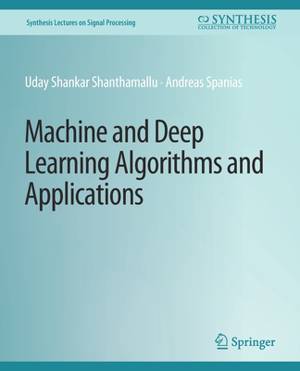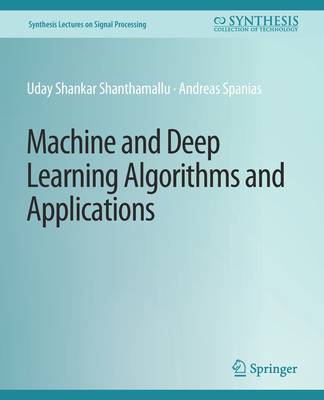
- Afhalen na 1 uur in een winkel met voorraad
- Gratis thuislevering in België vanaf € 30
- Ruim aanbod met 7 miljoen producten
- Afhalen na 1 uur in een winkel met voorraad
- Gratis thuislevering in België vanaf € 30
- Ruim aanbod met 7 miljoen producten
Zoeken
€ 58,45
+ 116 punten
Uitvoering
Omschrijving
This book introduces basic machine learning concepts and applications for a broad audience that includes students, faculty, and industry practitioners. We begin by describing how machine learning provides capabilities to computers and embedded systems to learn from data. A typical machine learning algorithm involves training, and generally the performance of a machine learning model improves with more training data. Deep learning is a sub-area of machine learning that involves extensive use of layers of artificial neural networks typically trained on massive amounts of data. Machine and deep learning methods are often used in contemporary data science tasks to address the growing data sets and detect, cluster, and classify data patterns. Although machine learning commercial interest has grown relatively recently, the roots of machine learning go back to decades ago. We note that nearly all organizations, including industry, government, defense, and health, are using machine learning toaddress a variety of needs and applications. The machine learning paradigms presented can be broadly divided into the following three categories: supervised learning, unsupervised learning, and semi-supervised learning. Supervised learning algorithms focus on learning a mapping function, and they are trained with supervision on labeled data. Supervised learning is further sub-divided into classification and regression algorithms. Unsupervised learning typically does not have access to ground truth, and often the goal is to learn or uncover the hidden pattern in the data. Through semi-supervised learning, one can effectively utilize a large volume of unlabeled data and a limited amount of labeled data to improve machine learning model performances. Deep learning and neural networks are also covered in this book. Deep neural networks have attracted a lot of interest during the last ten years due to the availability of graphics processing units (GPU) computational power, big data, and new software platforms. They have strong capabilities in terms of learning complex mapping functions for different types of data. We organize the book as follows. The book starts by introducing concepts in supervised, unsupervised, and semi-supervised learning. Several algorithms and their inner workings are presented within these three categories. We then continue with a brief introduction to artificial neural network algorithms and their properties. In addition, we cover an array of applications and provide extensive bibliography. The book ends with a summary of the key machine learning concepts.
Specificaties
Betrokkenen
- Auteur(s):
- Uitgeverij:
Inhoud
- Aantal bladzijden:
- 107
- Taal:
- Engels
- Reeks:
Eigenschappen
- Productcode (EAN):
- 9783031037481
- Verschijningsdatum:
- 22/12/2021
- Uitvoering:
- Paperback
- Formaat:
- Trade paperback (VS)
- Afmetingen:
- 190 mm x 235 mm
- Gewicht:
- 226 g

Alleen bij Standaard Boekhandel
+ 116 punten op je klantenkaart van Standaard Boekhandel
Beoordelingen
We publiceren alleen reviews die voldoen aan de voorwaarden voor reviews. Bekijk onze voorwaarden voor reviews.











